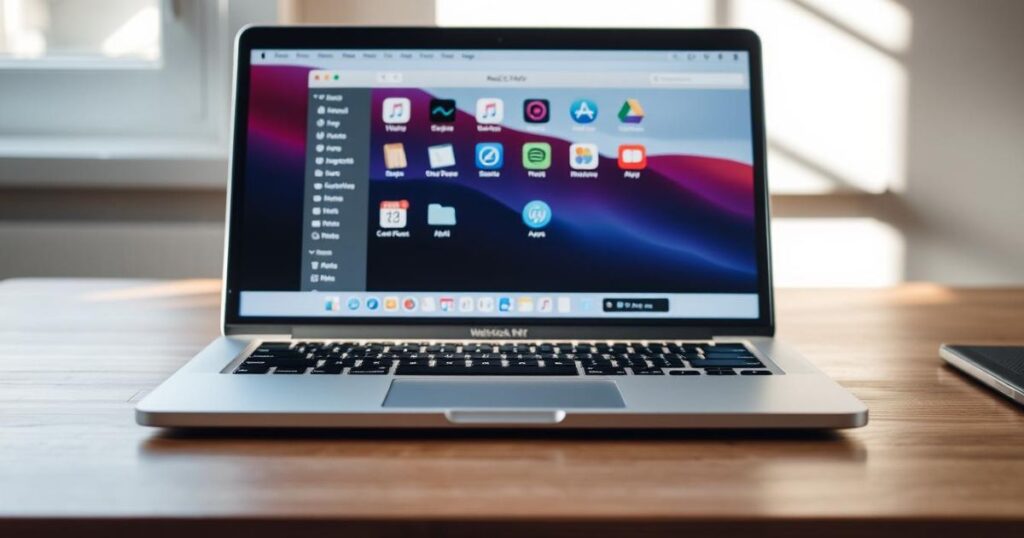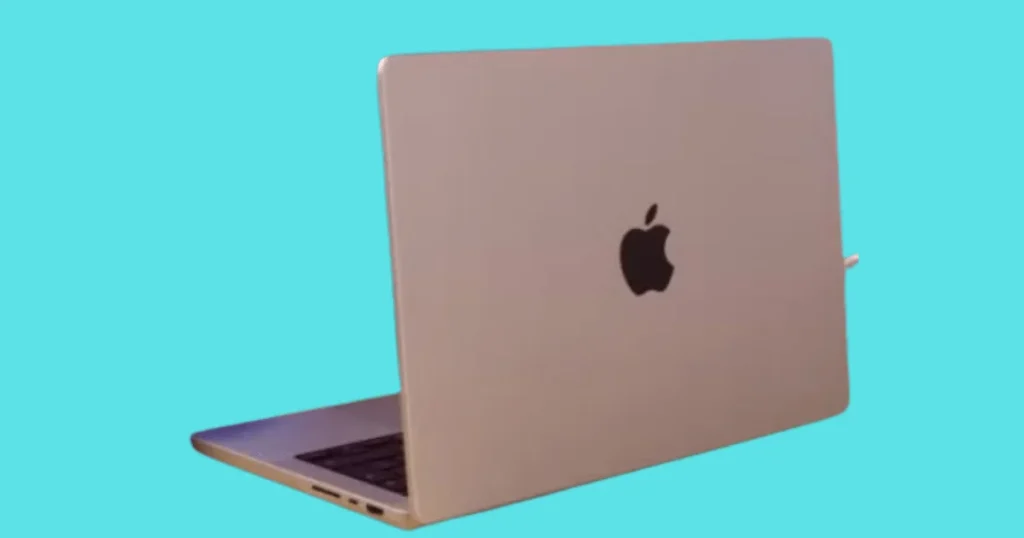How to Uninstall Apps in Mac OS - Easy Step-by-Step Guide

Ever feel like some apps on your Mac won’t leave? You try to throw them away, but they leave hidden files. This guide will show you how to clean your Mac fully, getting rid of all leftover files.
Table of Contents
ToggleDeleting a program is more than just removing its icon. Apps often store extra files in different places, taking up space. This article will teach you easy and advanced ways to clean your Mac well.
You’ll learn how to correctly delete apps using Finder, Terminal, and Launchpad. These guidelines will get you through the process swiftly and simply, whatever your level of experience.
Make sure the application is closed before you begin. This reduces the possibility of problems during removal. Use these pointers to maintain a tidy and clutter-free Mac.
In-depth Instructions: How to Uninstall App in Mac OS
Having trouble with space on your Mac? Getting rid of unused programs can help. Here are three easy ways to remove app files completely.
Using Launchpad for App Deletion
Launchpad is the simplest way to remove app mac files, like those from the App Store. Here’s how:
- Open Launchpad from the Dock or the Applications folder.
- Press and hold the Option key until the app icons start to jiggle.
- Click the Delete button (X) on the app you want to remove.
Removing Apps via Finder and Trash
For apps not in Launchpad, use Finder to delete app files. Follow these steps:
- Open Finder and find the application folder.
- Drag an app into the trash to remove it.
- Or select the program and select File > Move to Trash from the menu.
- To complete the task, empty the trash.
Tip: Use the keyboard shortcut Command-Delete to move apps to the Trash fast.
Uninstalling with Terminal Commands
For advanced users, Terminal is a powerful tool for remove app mac files. Here’s a quick guide:
- From the Applications > Utilities folder, launch Terminal.
- Go to the directory containing the application.
- To get rid of the program, execute sudo rm -f [app name].
Be cautious when performing terminal commands because of the potential that they may permanently delete files.
By following these recommendations, you can preserve the functionality and appearance of yo
Advanced Methods for Complete App Removal
Programs are not usually permanently removed when they are deleted. Many mac app files leave behind data in hidden folders. This data can take up space and slow your system. To clean up fully, let’s look at advanced methods.
Removing Residual Files from Your Library
Even after dragging an icon to the Trash, some files stay behind. These include caches, logs, and preferences in the Library folder. To get to it and keep it clean, take these actions:
- Choose the “Go to Folder” menu item from the menu that shows up when you launch Finder.
- Type ~/Library/ and press Enter.
- Look for folders like Caches, Preferences, and Application Support.
- Delete files related to the program you removed.
Note: Be careful when deleting files manually. Avoid deleting system data to prevent problems.
Utilizing Developer-Provided Uninstallers and Cleanup Tools
Some app downloaded from the downloaded app store come with their own uninstallers. These tools make sure all files are gone. If an uninstaller is not available, examine third-party programs such as Avast Cleanup for Mac. They locate and remove unnecessary files on your behalf.
By doing these steps, you can make more space and keep your Mac fast. These advanced met
The Best Practices and Troubleshooting
App deletion might be challenging. You might find apps that won’t delete files or leave them behind. This section will help with common problems and tips for a smooth system.
Handling Apps That Refuse to Delete
If an app refuses to be deleted, perhaps it’s operating in the background. Here’s how to make it better:
- Force quit the app using Option + Command + Esc. This opens the Force Quit Applications window.
- Restart your Mac to make sure no processes are running.
- Boot into Safe Mode by holding the Shift key during startup. This stops extra processes.
If the app is stubborn, check if it’s open. Open Finder and go to the application folder. Make sure the app is closed before trying to drag app to the Trash.
Optimizing Your Mac for Better Performance
Regular care keeps your drive clean and your system running well. Here are some tips:
- Regularly clean out unneeded files and apps with Finder.
- Make sure you have admin access when the system asks.
- Check the developer‘s instructions if an app won’t delete. Official help often has specific steps.
| Task | Benefit |
|---|---|
| Clean cache files | Frees up drive space |
| Remove unused apps | Improves system speed |
| Update software | Boosts security and performance |
By following these steps, you can keep your system clean and efficient. Always delete apps the right way to avoid problems later.
Final Thoughts
Keeping your system clean is key for the best performance. By following this guide, you can delete app files completely. This frees up storage and makes your Mac faster.
Whether you use Launchpad, Finder, or Terminal, each method removes apps fully. Don’t forget to check for leftover files in the Library folder or use cleanup tools for a full uninstall.
If an app won’t delete, try force quitting or restarting. Regular maintenance, like removing unused software, keeps your disk clean and your Mac running smoothly.
This guide is based on trusted sources, so it’s reliable. Come back to it whenever you want to delete apps or do routine cleanups. With the right care, managing your system is easy and rewarding.
FAQs
Can I remove apps straight from the dock?
Yes, you can drag and drop programs out of the Dock to the trash their icons. However, this only eliminates the shortcut, not the actual software. Use Launchpad or Finder to completely remove.
What occurs if I remove an app, but its files are still there?
Files that are left over may take up space. To remove everything, check your Library folder for files or use a Mac cleanup tool.
Is it safe to use Terminal commands to uninstall apps?
Terminal commands can work well but need care. Wrong commands can harm system files. Use commands only when you are certain of the advanced settings, or always double-check them.
How can I locate apps downloaded from the App Store?
Launchpad contains App Store apps or the Applications folder. They can be removed from the Finder’s Trash or Launchpad.
What should I do if an app won’t delete?
Make sure a program is not running if it won’t delete. Use Activity Monitor to force quit it. Then, try deleting it again. Verify your permissions if it’s not functioning. Use an uninstaller from a third party instead.
How can I make storage space available after uninstalling apps?
After removing it, clear the trash to delete files for good. Utilize storage tools to locate and eliminate more files youdon’t need.
Are there tools to help with app removal?
Yes, programs like AppCleaner and CleanMyMac can be useful. They remove apps and their files. These tools are great for getting rid of leftovers.


Usually I do not read article on blogs however I would like to say that this writeup very compelled me to take a look at and do it Your writing style has been amazed me Thank you very nice article
Your content always keeps me coming back for more!
you are in reality a good webmaster The website loading velocity is amazing It sort of feels that youre doing any distinctive trick Also The contents are masterwork you have done a fantastic job in this topic
Hi i think that i saw you visited my web site thus i came to Return the favore I am attempting to find things to improve my web siteI suppose its ok to use some of your ideas
Hi Neat post Theres an issue together with your web site in internet explorer may test this IE still is the marketplace chief and a good component of people will pass over your fantastic writing due to this problem
I have been browsing online more than 3 hours today, yet I never found any interesting article like yours. It’s pretty worth enough for me. In my opinion, if all webmasters and bloggers made good content as you did, the internet will be a lot more useful than ever before.
Your writing is like a breath of fresh air in the often stale world of online content. Your unique perspective and engaging style set you apart from the crowd. Thank you for sharing your talents with us.
Hi Neat post Theres an issue together with your web site in internet explorer may test this IE still is the marketplace chief and a good component of people will pass over your fantastic writing due to this problem
Your writing has a way of making even the most complex topics accessible and engaging. I’m constantly impressed by your ability to distill complicated concepts into easy-to-understand language.
I loved as much as you will receive carried out right here The sketch is tasteful your authored subject matter stylish nonetheless you command get got an edginess over that you wish be delivering the following unwell unquestionably come further formerly again as exactly the same nearly very often inside case you shield this hike
Thank you for the auspicious writeup It in fact was a amusement account it Look advanced to more added agreeable from you By the way how could we communicate
Wow superb blog layout How long have you been blogging for you make blogging look easy The overall look of your site is magnificent as well as the content
Your blog has quickly become my go-to source for reliable information and thought-provoking commentary. I’m constantly recommending it to friends and colleagues. Keep up the excellent work!
My brother suggested I might like this blog He was totally right This post actually made my day You can not imagine simply how much time I had spent for this info Thanks
Great article! I really appreciate the way you explained everything so clearly – it feels like you put a lot of effort into making it useful for readers. I’ve been exploring different tools and resources myself, and recently started using https://webdesignfreelancermunchen.de/ by Abdul, professional webdesigner in bamberg. It’s been a game changer for me, and reading your post actually gave me even more ideas on how to apply it. Thanks for sharing such valuable insights!
Usually I do not read post on blogs, but I would like to say that this write-up very forced me to try and do so! Your writing style has been amazed me. Thanks, quite nice post.
I wanted to take a moment to commend you on the outstanding quality of your blog. Your dedication to excellence is evident in every aspect of your writing. Truly impressive!
Your blog is a true hidden gem on the internet. Your thoughtful analysis and engaging writing style set you apart from the crowd. Keep up the excellent work!